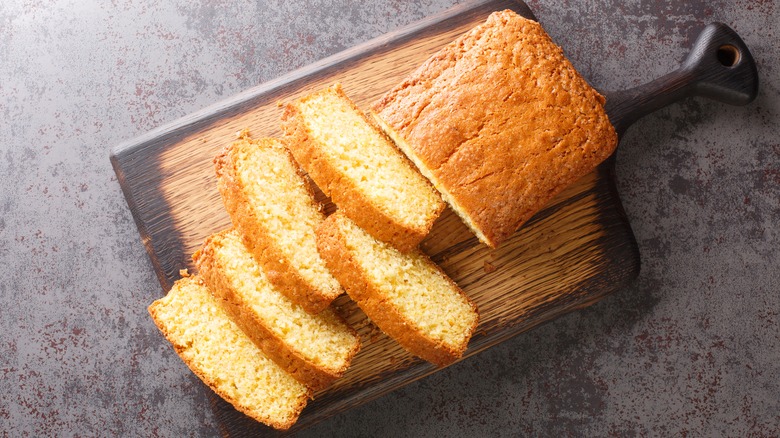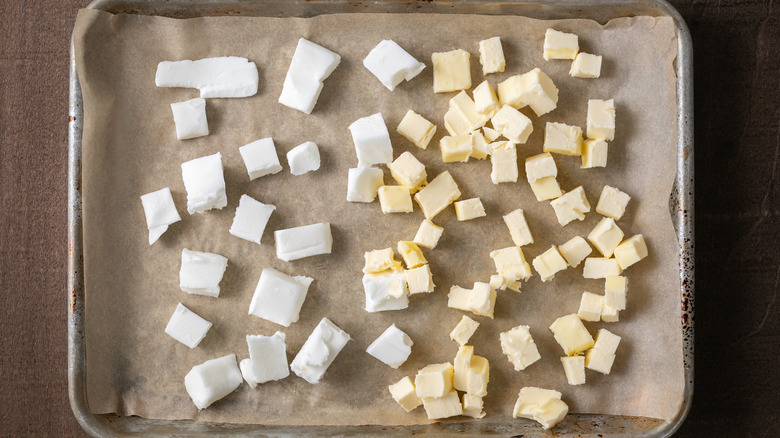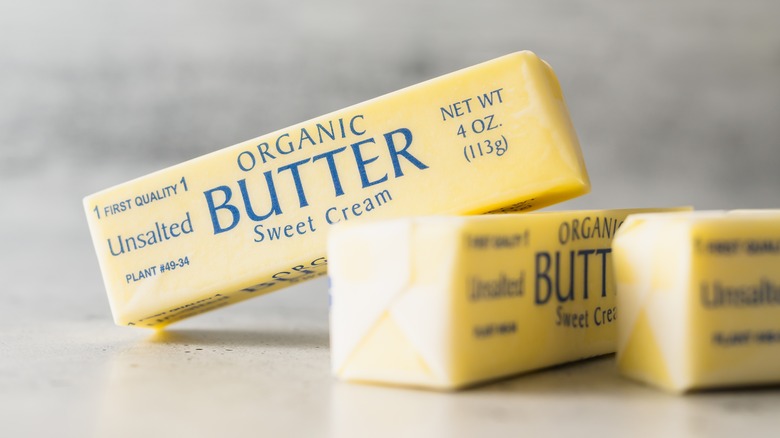What To Consider Before Baking Cake With Shortening Instead Of Butter
When baking a cake, you need to make sure your dessert has a little bit of fat in the recipe. Fat is essential for making sure your cakes are deliciously moist. Both butter and shortening are forms of fat that can help to improve the texture of your cakes — though one of the two will also provide a little extra flavor.
Butter is made from milkfat and water, and shortening is made entirely of fat from vegetable oils. Fortunately, if you only have one on hand and not the other, cakes made with butter versus shortening are pretty similar. In most cases, the two fats can be swapped out for one another. However, there are slight differences in the end result between cakes made with butter and those using shortening.
In terms of taste, butter can add a distinct flavor to cakes where it plays a major role — like in a buttery pound cake. Shortening, on the other hand, has no flavor of its own. Additionally, the texture of your cake will differ slightly. Cakes made with shortening are typically lighter and more tender.
Different fats will result in different textures
When using butter, the water content will turn to steam as the cake is baked in the heat of the oven. That steam will assist in gluten production as the cake bakes, so it will be a little crispier once it's finished. Shortening, on the other hand, contains no water. Without that steam, the final texture of cakes made with shortening might be a little softer.
Additionally, butter has a lower melting point than shortening does. This can cause the butter to spread more while baking, and your cakes may be a little denser and flatter once they're baked. Since shortening can withstand higher heat, it can allow your baked goods to be a lighter and fluffier.
The texture differences between cakes baked with butter and shortening may be minimal, but they can be noticeable if you're particular about the mouthfeel of your cakes. If you prefer a fluffier, softer cake, shortening may be the way to go.
The taste could be slightly different
In addition to taking on a different texture, the flavor of your cakes could differ a bit between using butter or shortening. Butter tastes a little richer and creamier. If you opt to use sticks of salted butter, you can even use the additional salt content to cut through the sweetness of the cake batter.
Although shortening can be effective in providing some moisture to the batter, the taste imparted by butter can't be replicated. If you're planning on allowing other flavors to be the star of the dessert, though, it's better to swap in shortening in place of butter.
Ultimately, the decision between which of the two to use comes down to flavor and texture. If you're baking up a buttery yellow cake, you'll want to grab a stick of butter to maintain that particular flavor. But if your cake has other flavor additions and you want a fluffier texture, try adding in some shortening instead.


